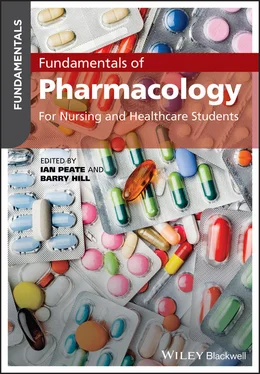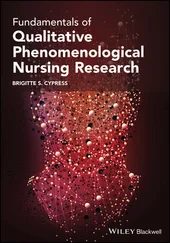Episode of care: Mental health
Mr. Murphy, an 80‐year‐old man, has vascular dementia and lives in a care home; he relies on the care home staff to manage his medicines safely.
Mr. Murphy was admitted to hospital after he had displayed signs of a venous thromboembolism and he was discharged four days later; he was prescribed and was taking anticoagulant therapy. When he was discharged from hospital, he was discharged with an 18‐day supply of medicine. The care home staff failed to order a new prescription for Mr. Murphy after the 18 days lapsed. The systems within the care home had failed to identify that the medication was not given for between 30 and 33 days.
Mr. Murphy was taken back into hospital with a pulmonary thromboembolism and deep vein thrombosis. He was in hospital for over three months where he eventually died.
The care home had failed to adhere to local policy and procedure that helps to minimise medication errors. Regulations and standards are put in place to prevent people from receiving unsafe care and treatment and prevent avoidable harm or risk of harm. Medicines must be supplied in adequate quantities, managed in a safe way and administered appropriately to ensure that people are safe.
In England, the Health and Social Care Act 2008 (Regulated Activities) Regulations 2014: Regulation 12, for example, aims to prevent people from receiving unsafe care and treatment and prevent avoidable harm or risk of harm. Those who provide care must undertake a risk assessment with regards to people's health and safety when receiving care or treatment and make sure that their staff have the appropriate qualifications, competence, skills and experience to maintain people's safety. If an organisation fails to comply with laws and regulations, they may be prosecuted.
Clinical considerations
Managing medicines in care homes
The National Institute for Health and Care Excellence (NICE) (2014) has published guidelines that address good practice for managing medicines in care homes. The guideline aims to promote the safe and effective use of medicines in care homes, and it offers advice on processes for prescribing, handling and administering medicines. The guideline also recommends how care and services relating to medicines should be provided to those people who are living in care homes.
The Nursing and Midwifery Council (2010) previously issued standards and guidance for the administration of medicines; however, they no longer do this. Professional guidance produced by the Royal Pharmaceutical Society (RPS) (2018a) provides a framework for the safe and secure handling of medicines; this replaces the NMC's previous standards. This guidance uses an all professional approach providing information and advice for all healthcare professionals on medicines management and administration. The RCN and RPS (2019) have co‐produced Guidance on the Administration of Medicines in Healthcare Settings, offering principles‐based guidance to ensure the safe administration of medicines by healthcare professionals.
Clinical considerations
Managing medicines for those receiving social care in the community
The National Institute for Health and Care Excellence (NICE) (2017) has published guidelines that cover medicines support for adults who are receiving social care in the community. It aims to ensure that people who receive social care are supported to take and look after their medicines effectively and safely at home. Guidance offers advice on assessing if people will require help with managing their medicines, who should provide medicines support, and how health and social care staff should work together.
In 2017, Higher Education England issued advisory guidance for Nursing Associates with regards to the administration of medicines. The guidance plays a key part in ensuring the Nursing Associate is able to work safely and appropriately with regards to medicine and as part of the nursing team.
As well as the various standards, advice and guidance issued, NHS trusts and other organisations will have also prepared their own guidance on how to safely and effectively handle medicines. The healthcare worker should always check and follow this local guidance when providing care that is related to the administration of medicines.
It should also be remembered that there may be a need to consult other sources of guidance concerning specific areas of practice, such as:
NICE;
publications by the British National Formulary;
the Royal College of Nursing;
the four UK Health and Social Care Departments;
specialist associations, such as the British Association of Sexual Health and HIV, UK Oncology Forum;
the World Health Organization.
Clinical considerations
Managing oxygen in care homes
Oxygen is a medical gas and as such should be treated as a medicine.
Home oxygen therapy is commonly used in care homes. It involves breathing oxygen mixed with air from a cylinder or machine. It is often prescribed for those people who have respiratory conditions, such as chronic obstructive pulmonary disease that can result in low oxygen levels in the blood. Home oxygen therapy can be given via:
nasal cannulae
face mask
tracheostomy mask.
The oxygen is delivered via tubing or mask from an oxygen cylinder, an oxygen concentrator or a ventilator.
Oxygen is prescribed on a home oxygen order form. The form contains details of how the oxygen is to be used. The prescriber sends the home oxygen order form to the oxygen supplier who then arranges delivery.
Staff at the care home should tell the person prescribing the oxygen about any changes in a person's clinical condition; this then allows the prescriber to amend and organise for a new home oxygen order form, if required.
The person's care plan should include information about home oxygen therapy. This should include who it is who will be monitoring the person who is using the oxygen.
The care plan (documentation) should also address the administration of oxygen. This has to include flow rate, frequency and duration of use; the prescriber's details should also be included. Each time staff administer oxygen, these details should be checked to ensure that the oxygen is being administered correctly.
If the person is self‐administering the oxygen, a risk assessment has to be carried out (individual risk assessments should include information about the potential dangers of having and using oxygen in the care home). A copy of the risk assessment should be kept in the person's care plan.
Local policy and procedure must be adhered to at all times. The tubing and masks must be clean and in good condition and replaced when needed. Tubing and masks must only be used for the person the oxygen was prescribed for.
Staff have to be trained and deemed competent to manage home oxygen therapy.
As with all medications, oxygen cylinders have an expiry date. The expiry date has to be checked to ensure that out‐of‐date cylinders are not used.
If equipment is no longer in use or it is out of date, it should be returned to the oxygen supplier.
The term medicines optimisation is generally used to encompass a more people‐centred approach to the use of medicine as part of a person's care (NICE, 2015). It is essential that patients get the best quality outcomes from medicines: medicines play an important role in maintaining health, preventing illness, managing chronic conditions and curing disease – all against a backdrop of significant economic, demographic and technological change. There is evidence to suggest that there is an urgent need to get the essentials of medicines use right. Medicines use is too often sub‐optimal and a step change is needed in the way that all healthcare professionals offer support to patients in order to get the best possible outcomes from their medicines (Royal Pharmaceutical Society, 2013).
Читать дальше












